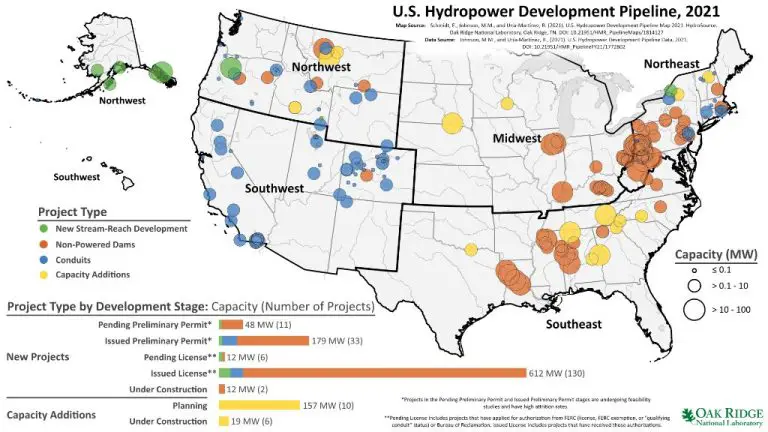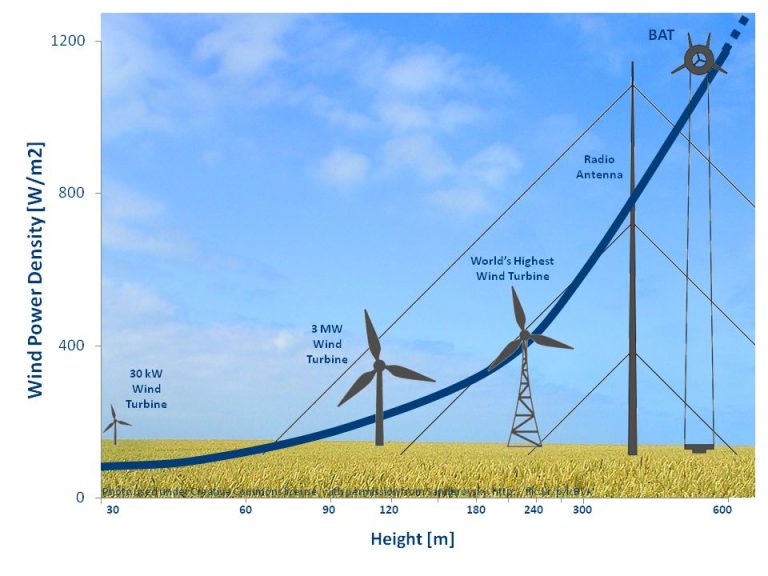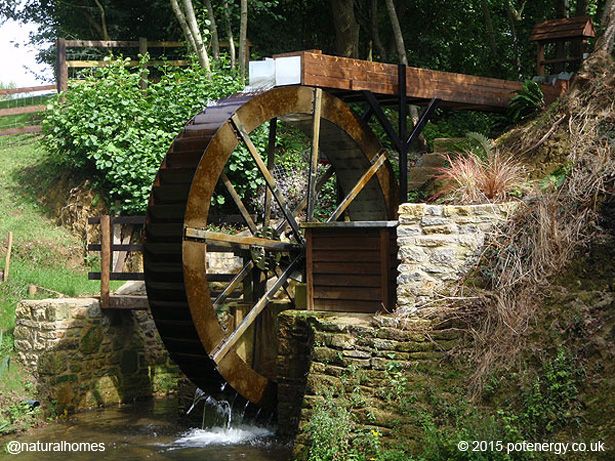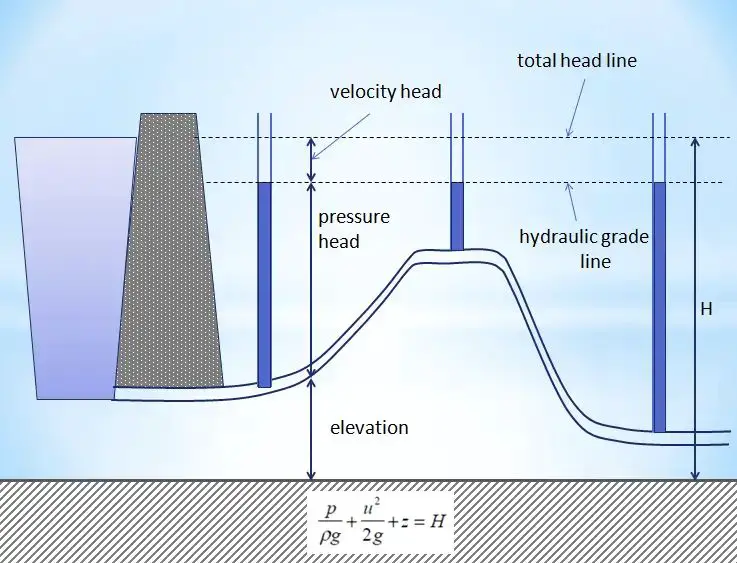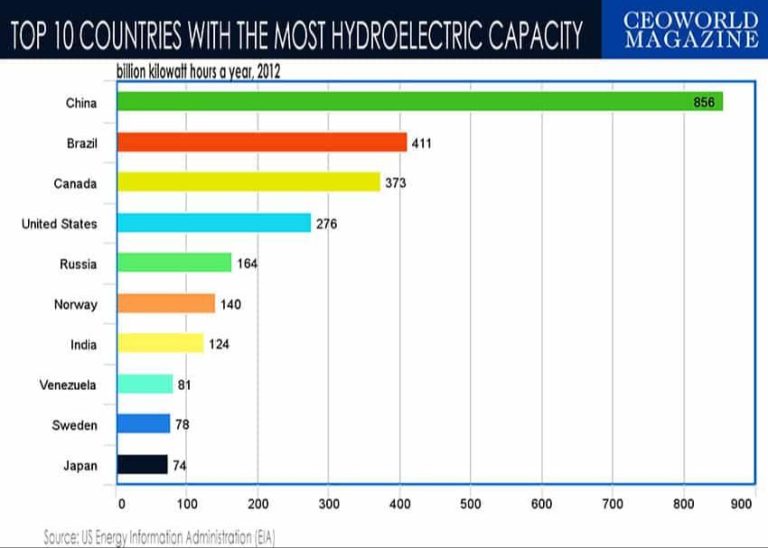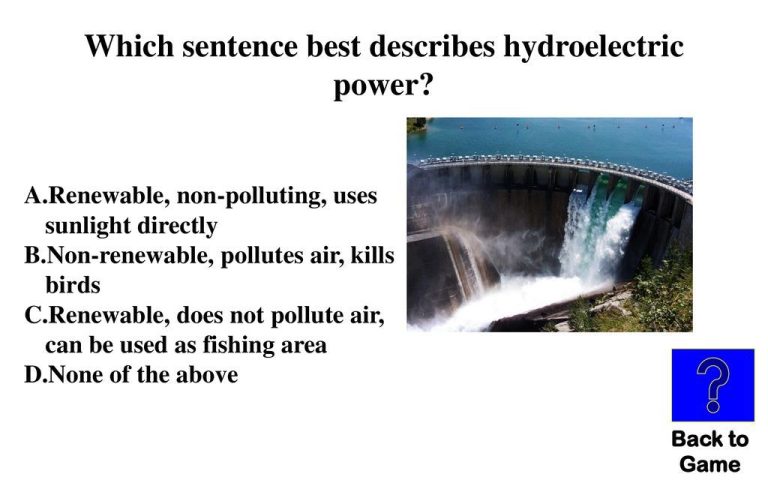What Does Hydroelectric Energy Require?
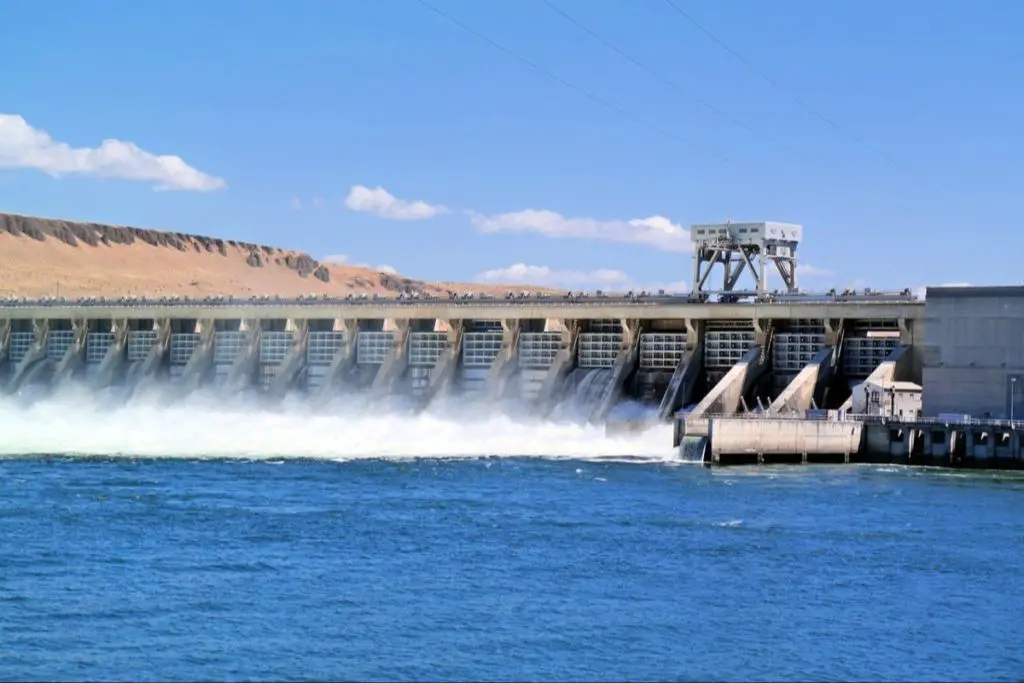
Hydroelectric power, also called hydroelectricity, is the process of generating electricity using the energy from flowing water. It is considered a renewable energy source because it relies on the water cycle, which is continuously replenished by rainfall (1).
The use of hydropower dates back thousands of years, with early examples including waterwheels used for grinding grain. In the late 19th century, hydropower began being harnessed on a large scale for electricity generation (2).
Today, hydropower is an important source of renewable electricity around the world. It accounts for over 16% of total global electricity generation and around 60% of renewable electricity generation (1). As a clean, renewable energy source, hydropower helps reduce dependence on fossil fuels and lower greenhouse gas emissions.
Sources:
(1) https://www.hydropower.org/iha/discover-facts-about-hydropower
(2) https://www.iea.org/energy-system/renewables/hydroelectricity
Water Sources Needed
Hydroelectric power requires reliable water sources in order to generate electricity. The most common sources used are rivers, lakes, reservoirs, and ocean tides/waves.[1]
Rivers provide a constant flow of water to turn hydroelectric turbines. Many dams are built along major rivers to harness their energy for power generation. Rivers supply abundant water volume and flow to produce electricity on a large scale.
Lakes, both natural and man-made reservoirs, are another key water source for hydroelectricity. Water can be released from lakes through spillways and dammed channels to spin turbines. Large reservoirs ensure ample water storage for electricity production.
Ocean tides and waves contain huge amounts of energy that can be captured for hydroelectric power. Coastal dams and tidal barrages use the rise and fall of tides to turn turbines. New technologies allow floating generators to convert wave motion into electricity offshore.
[1] https://en.wikipedia.org/wiki/List_of_largest_hydroelectric_power_stations
Dam Construction
Hydroelectric dams are large civil engineering projects that require extensive planning and resources. There are several main types of dams used for hydroelectric power:
- Arch dams – Curved masonry dams that transfer water pressure to the canyon walls
- Gravity dams – Solid concrete structures relying on their own weight for stability
- Buttress dams – Dams with triangular supports to improve structural integrity
- Embankment dams – Earthen or rock-fill dams built by stacking material
Key considerations for dam construction include the geological composition and stability of the canyon, availability of suitable building materials, and ability to withstand hydraulic pressure. Concrete and steel-reinforced concrete are common materials used. Proper site selection and engineering design are critical to ensure the dam can safely contain and control water flow.
Building a hydroelectric dam is a monumental feat of civil engineering requiring extensive planning, resource mobilization, and construction over many years. The structure must be able to withstand massive water pressures and environmental stresses over decades of operation.
For more information see: https://energyeducation.ca/encyclopedia/Hydroelectric_dam
Turbines and Generators
The most common types of turbines used in hydroelectric plants are reaction turbines and impulse turbines. Reaction turbines include Francis turbines and Kaplan turbines, while Pelton wheels are a type of impulse turbine (https://www.energy.gov/eere/water/types-hydropower-turbines).
Francis turbines are the most widely used for hydroelectric power. They operate with water pressure and are used for mid-range heads between 30 – 600 meters. Francis turbines consist of guide vanes, a runner, and draft tube (https://www.enelgreenpower.com/learning-hub/renewable-energies/hydroelectric-energy/hydroelectric-turbines).
Kaplan turbines are propeller-type turbines used for low-head sites under 30 meters. They have adjustable blades for efficiency and consist of a runner, hub, blade, and wicket gate. Kaplan turbines provide high power at low speeds (https://www.energy.gov/eere/water/types-hydropower-turbines).
Pelton wheels are impulse turbines that use the kinetic energy of water from a high head. They consist of buckets mounted around a runner on the outside of the turbine. Water jets hit the buckets and make the runner spin (https://www.enelgreenpower.com/learning-hub/renewable-energies/hydroelectric-energy/hydroelectric-turbines).
The spinning turbine is connected to the generator shaft, which rotates electromagnets inside the generator. This motion produces electricity via electromagnetic induction. The power output is controlled by adjusting the flow of water to the turbine.
Power Transmission
Once the electrical energy is generated by the turbines at the hydroelectric dam, it must be transmitted to the end users. This is done via transformers, transmission lines, and substations.
Transformers are used to step up the voltage of the electricity generated at the dam, which allows it to travel long distances over transmission lines with minimal power losses. The high voltage electricity from the dam generators (typically 6-22kV) is stepped up by transformers at the dam to extra high voltage (230-500kV) for transmission on the grid.1
The electricity then travels along transmission lines suspended between large steel towers. These transmission lines carry the power hundreds or even thousands of miles across the region and interconnect with other power plants and substations on the grid. Aluminum conductor steel reinforced (ACSR) cable is commonly used due to its high conductivity and tensile strength.1
At substations, additional transformers step down the voltage for distribution before delivering the electricity to homes, businesses and industries in the surrounding area via local distribution lines. Voltage is stepped down to 115kV or lower for distribution.2 Protective circuit breakers and monitoring equipment at substations also ensure reliable and safe power delivery across the grid.
Environmental Impacts of Hydroelectric Power
While hydroelectric power is a renewable energy source, dams and reservoirs can negatively impact the environment. According to the U.S. Energy Information Administration, the three main environmental impacts are habitat disruption, impediment to fish migration, and shoreline erosion.
Flooding areas and altering water levels disrupts the natural habitat for plants and animals. The U.S. Geological Survey notes that dams transform the area from a flowing river environment to an artificial lake environment. This flooding destroys forest, vegetation, and agricultural land. It also changes ecosystems and displaces wildlife.
Dams are problematic for migratory fish like salmon that require access to upstream areas for spawning. The U.S. Energy Information Administration states that modifying water levels and flows can prevent fish from reaching spawning grounds. Fish ladders and elevators help provide upstream passage for some fish.
Fluctuating water levels caused by hydropower facilities can lead to shoreline erosion. According to the Union of Concerned Scientists, erosion can increase turbidity and deposit sediment into spawning grounds. Maintaining minimum flows can help mitigate erosion impacts.
Geological Considerations
When selecting a site for hydroelectric power, geological factors are crucial to consider. The underlying rock structure and seismic risks can greatly impact the feasibility and safety of a hydroelectric dam. According to Entura, not fully understanding the geology is one of the biggest risks for hydropower projects.
The site must have a suitable foundation to support the dam structure. Areas with unstable rock, highly fractured bedrock, or loose sediment are poor choices. Sites near fault lines or zones of seismic activity also pose engineering challenges and risks of damage from earthquakes. Proper site surveys and geotechnical studies are essential.
Sedimentation buildup behind the dam can gradually reduce storage capacity over time. The underlying geology impacts erosion rates in the watershed. Excessive siltation can impair project economics. Careful assessment of sediment loads and transport in the river system needs to inform site selection and dam design.
Economic Factors
Hydroelectric power has relatively low operating costs compared to other energy sources, but the construction costs can be quite high. According to the Center for Climate and Energy Solutions, hydropower is considered inexpensive to operate, with generation costing between 2-7 cents per kWh. In the U.S., hydropower costs around 0.85 cents per kWh on average. This is about 50% the cost of nuclear, and 40% the cost of fossil fuel energy.
The most significant economic factor for hydroelectric power is the upfront construction cost. Building a hydroelectric dam and power plant requires major civil engineering work and can cost billions of dollars. According to Statista, in 2022 the global average installation cost for hydropower was $2881 per kW installed. Large-scale hydro projects like the Three Gorges Dam in China, which cost over $26 billion, demonstrate the massive investment required.
While hydroelectric can be capital intensive to build, once constructed the operating costs are relatively low. The fuel source, water, is free and renewable. With proper maintenance, hydroelectric plants can operate for many decades and provide low-cost, reliable electricity generation.
Maintenance Requirements
Hydroelectric power plants require ongoing maintenance and monitoring to ensure safe, reliable, and efficient operation. Some of the key maintenance requirements include:
Turbine maintenance is critical. Turbines should be regularly inspected for cracks, corrosion, oil leaks, vibration, and other issues. Maintenance tasks include lubricating bearings, testing protective devices, and replacing worn parts like runner blades and wicket gates. Periodic overhauls involve disassembling the turbine for inspection and repairs.Turbine functional checks, bearing lubrication, cleaning, and replacing wear parts help optimize performance and longevity.
Dam safety monitoring is essential. This involves visual inspections, instrumentation readings, structural analyses, and evaluations by engineers. Key areas to monitor are seepage, sinkholes, cracks, erosion, sediment buildup, dam movement, and spillway integrity. Early detection of potential dam issues allows for preventative measures.
Other maintenance tasks include inspecting and repairing gates, valves, generators, transformers, transmission lines, access roads, and buildings. Vegetation management and sediment removal from reservoirs are also regularly required. Routine maintenance, combined with staff training and dam safety programs, helps minimize risks and disruptions.
Future Outlook
The future growth potential for hydroelectric power is significant globally. With climate change and rising energy demands, many countries are looking to increase hydroelectric capacity. According to the International Energy Agency (IEA), global hydropower capacity is set to increase by 17%, or 230 GW, between 2021 and 2030.
In the United States specifically, the Department of Energy has outlined a vision for the future of hydropower in their Hydropower Vision report. This report highlights that U.S. hydropower capacity could grow from 101 GW to nearly 150 GW by 2050 through technology advances, innovative new designs, and powering existing dams. With these capacity increases, hydropower could provide renewable energy to meet 10% of U.S. electricity demand by 2050.
Some key technological improvements that will enable growth in hydroelectric power include: increased pumped storage capacity, new marine and hydrokinetic technologies like tidal and wave power, advances in hydropower turbine designs, and innovative systems that integrate hydroelectricity with intermittent renewables like wind and solar. Additionally, upgrades and retrofits to existing infrastructure can dramatically improve performance and capacity.
With the right policies, investments, and technological innovation, hydropower is poised for a bright future as a renewable, flexible and reliable source of electricity generation globally and in the United States.

